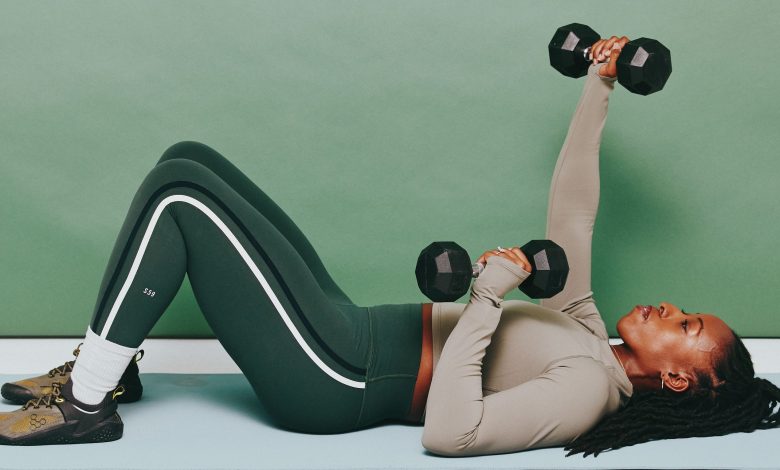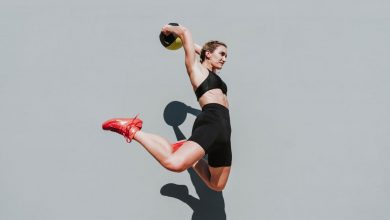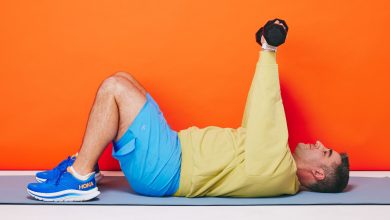13 Chest Exercises to Target and Strengthen Your Upper Body

Stroll through any gym, and chances are you’ll see someone doing a bench press. There’s good reason for that: This classic strength move is the quintessential exercise for targeting your chest muscles (also known as your pecs).
But it’s not your only option…not by a long shot. There are a bunch of different chest exercises—including tweaks on the OG chest press—that effectively ignite your upper body. And that’s a good thing, since each hits your muscles in a slightly different way.
Want to get pushing? Keep on reading for important intel on why chest strength matters, what equipment you need to smoke your pecs, and how doing variations of classic chest moves can balance out your routine—plus, of course, a whole bunch of chest exercises you can try yourself!
Why is chest strength important?
Any time you perform a pushing motion—like heaving open a door, maneuvering a shopping cart, picking yourself up off the ground, or putting a heavy box back on a shelf—your chest muscles light up. Your pecs (there are two: the pectoralis major and pectoralis minor) are the main players that help you complete that movement pattern. But your triceps on the back of your upper arms come in to assist. They work anytime you extend your elbows to straighten your arms, which you need to do when you push or press, Katie Pierson, CPT, a Montana-based certified personal trainer and contributor at Indoor Cycling Love, tells SELF. The stronger these muscles are, the more effectively and safely you’ll be able to complete those tasks of daily life.
Beyond that, the chest plays a key role in good posture, so strengthening it can bolster your ability to sit or stand upright. And your pecs also help stabilize the shoulder joint, so strengthening them can boost shoulder health and reduce risk of injury there.
Strength here is important for sure, but it’s also equally as crucial that you’re not giving your chest muscles so much love that you forget about the rest of your upper body: Make sure you’re balancing out chest exercises with moves that target your back muscles, too. You ideally want as much balance between these opposing muscle groups as possible—meaning, they have similar levels of strength, so one side isn’t way weaker than the other—so they can effectively work together as a team, Pierson says.
Also key: If you spend a lot of the time locked into a hunched forward posture (read: desk workers everywhere!), your pecs are likely tight, which is why on top of regular strength work, it’s wise to routinely stretch them, too.
What equipment do you need to work your chest?
You actually don’t need anything to fire up your chest. With moves like push-ups and dips, you can smoke your pec muscles using just your bodyweight. That makes these exercises easy additions to an at-home routine. At the same time, other chest exercises, like presses, flies, and pullovers, for example, do require the use of weights (usually dumbbells, though kettlebells and barbells work too, depending on the exercise!). This external load helps to really challenge your pec muscles and ultimately encourage them to grow bigger and stronger.
How variations of chest exercises work your muscles differently
When it comes to classic chest exercises—like the chest press and fly—you’ve got options. Lots of options. There are a bunch of variations on these OG moves that work your chest muscles slightly differently. Cool thing is, these variations require just subtle tweaks, like to your grip or your positioning or angle on a bench. For example, a traditional dumbbell chest press involves a pronated grip, where your palms face your feet, and the weights are in line with your shoulders, which works your pecs and deltoids. By swapping that for a close-grip chest press, where your palms face each other in a neutral grip and the weights are pressed together inside your shoulders, you work more of the center of your chest and triceps and less of the delts.
The same concept applies when you shift the angle of your bench—and thus, your body. By doing a press or fly at an incline, for instance, you place more load on the fronts of your shoulders, while also targeting more of your upper pecs compared to the flat bench variations. The opposite is true when you move to a decline position: You hit more of the lower pecs.
Keep in mind, these tweaks in hand positioning and bench angle don’t provide a huge shift, Pierson caveats. You’re still working the same muscles and movement patterns; it’s just that the intensity and focus changes slightly, which again, is helpful for injecting variation into your training plan to ensure your muscles are continually challenged. (Progressing to heavier weights and switching up your rep counts are two other surefire ways to do so!)



